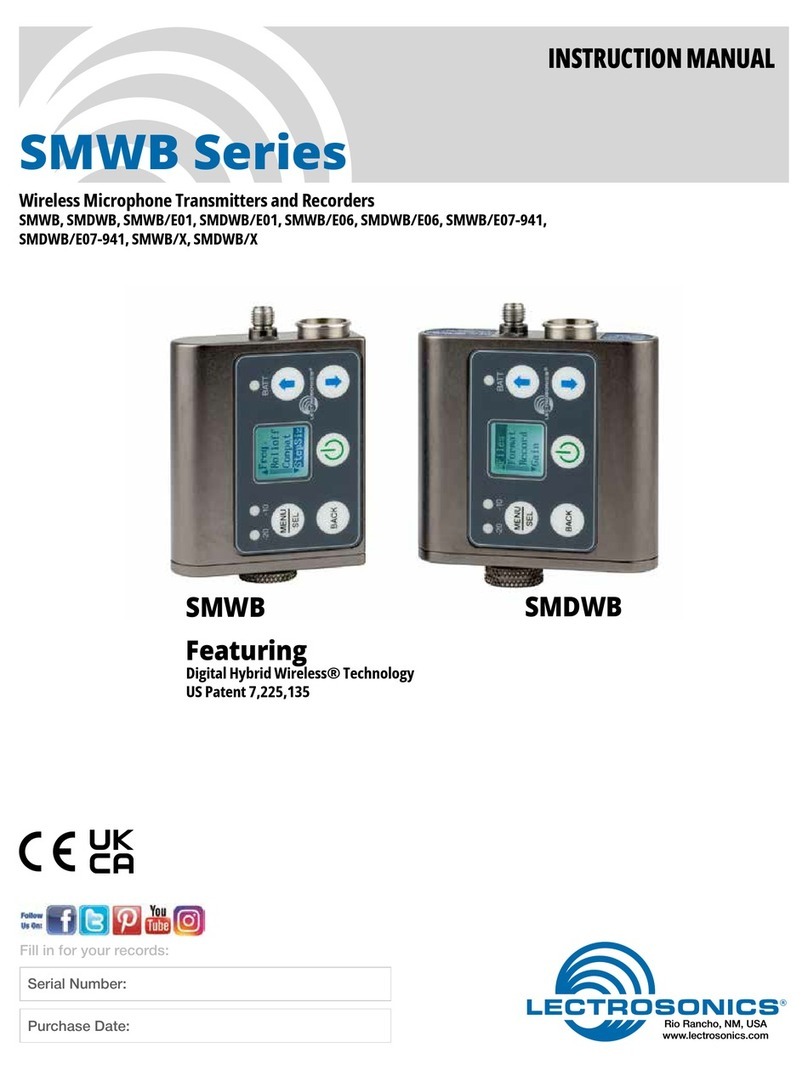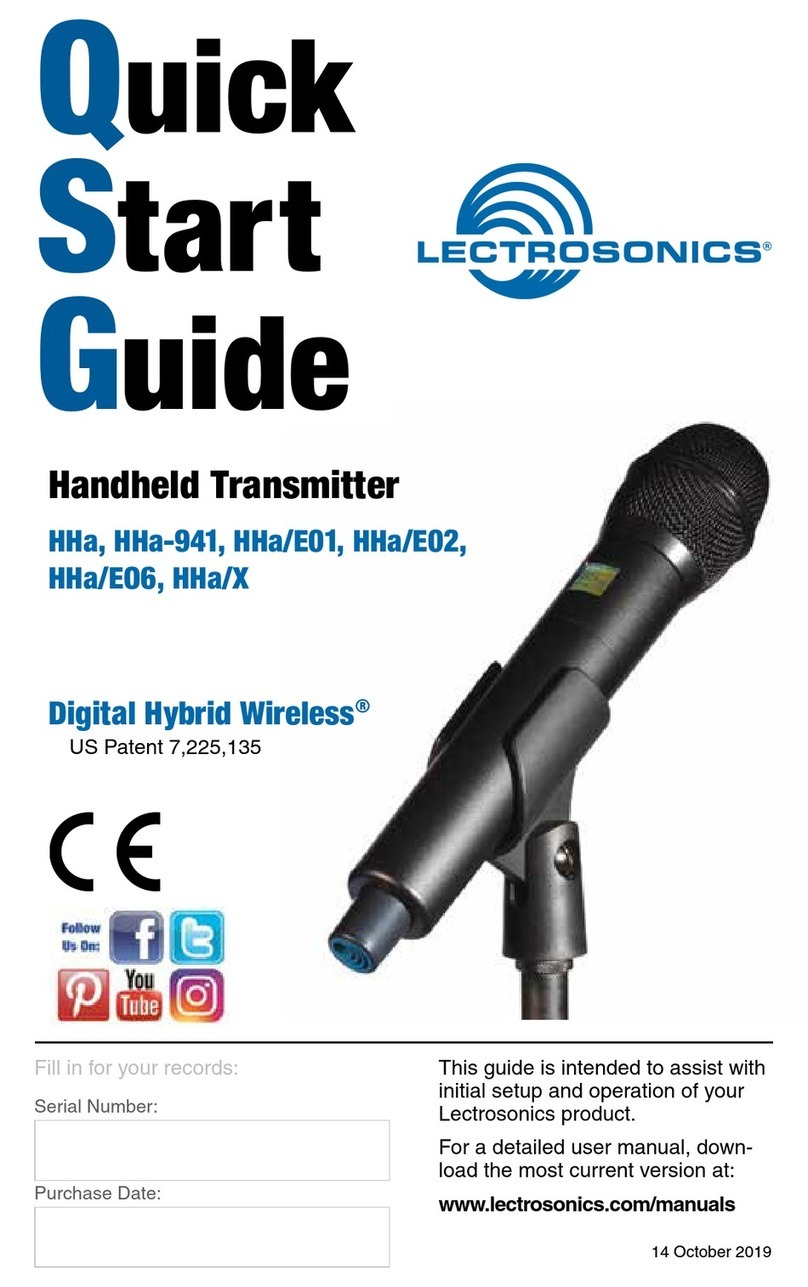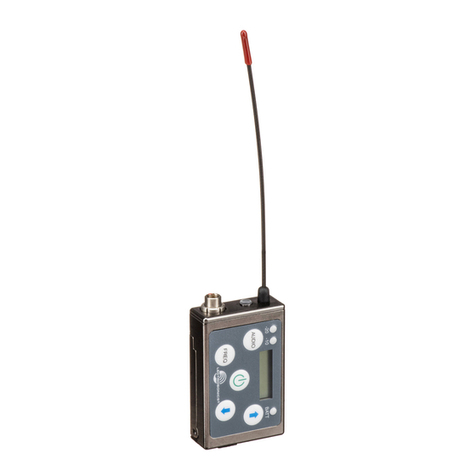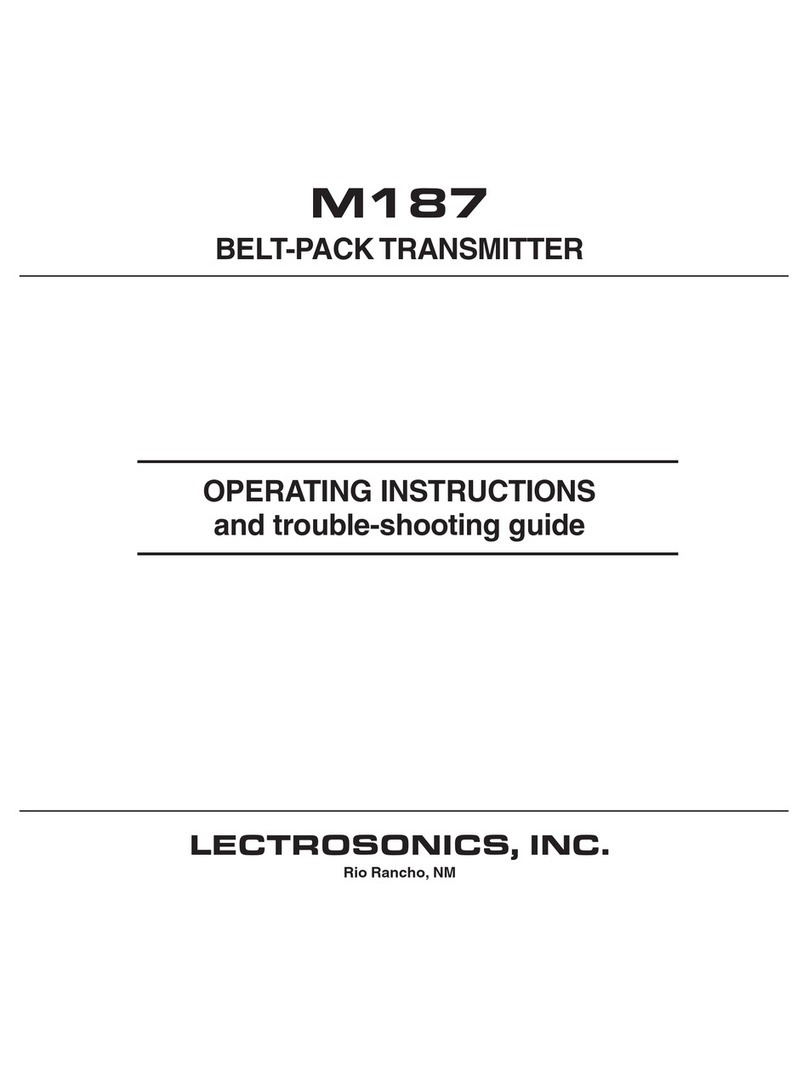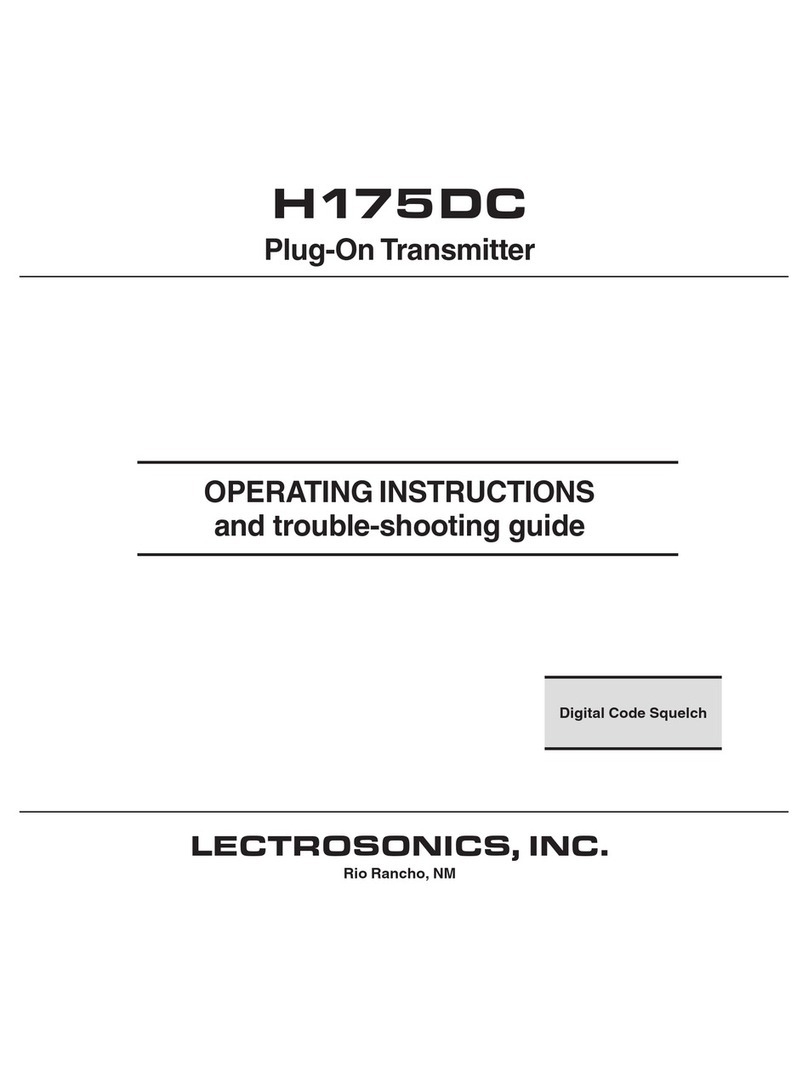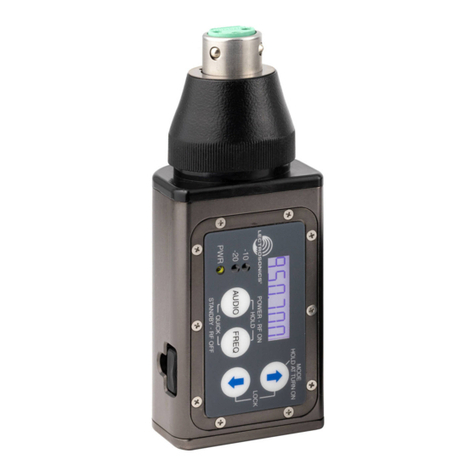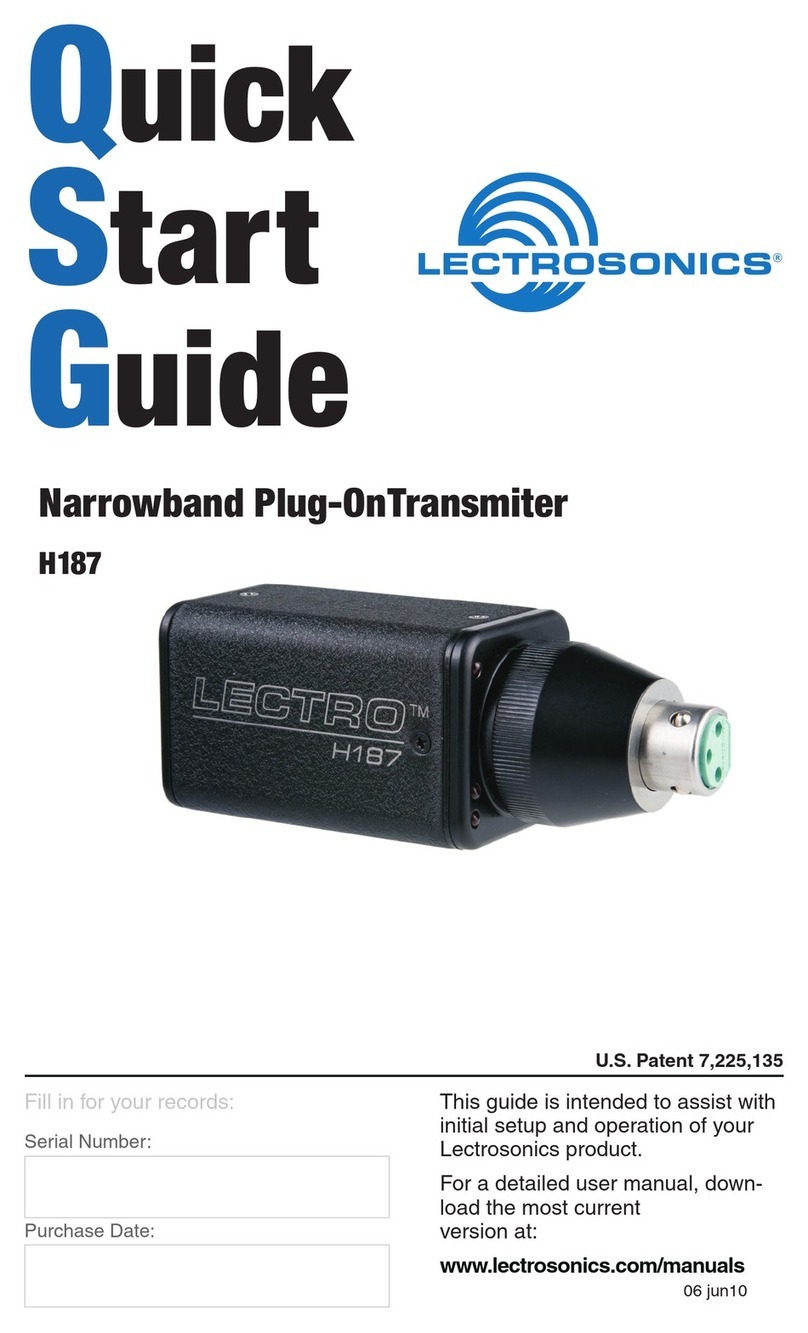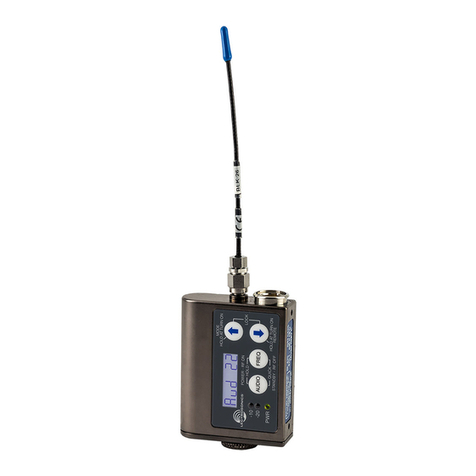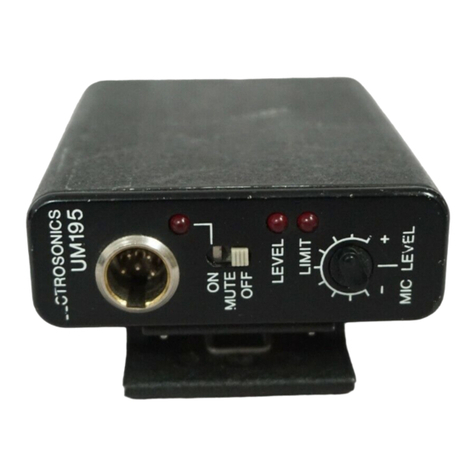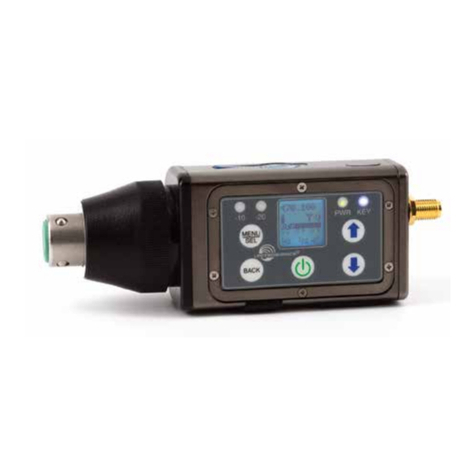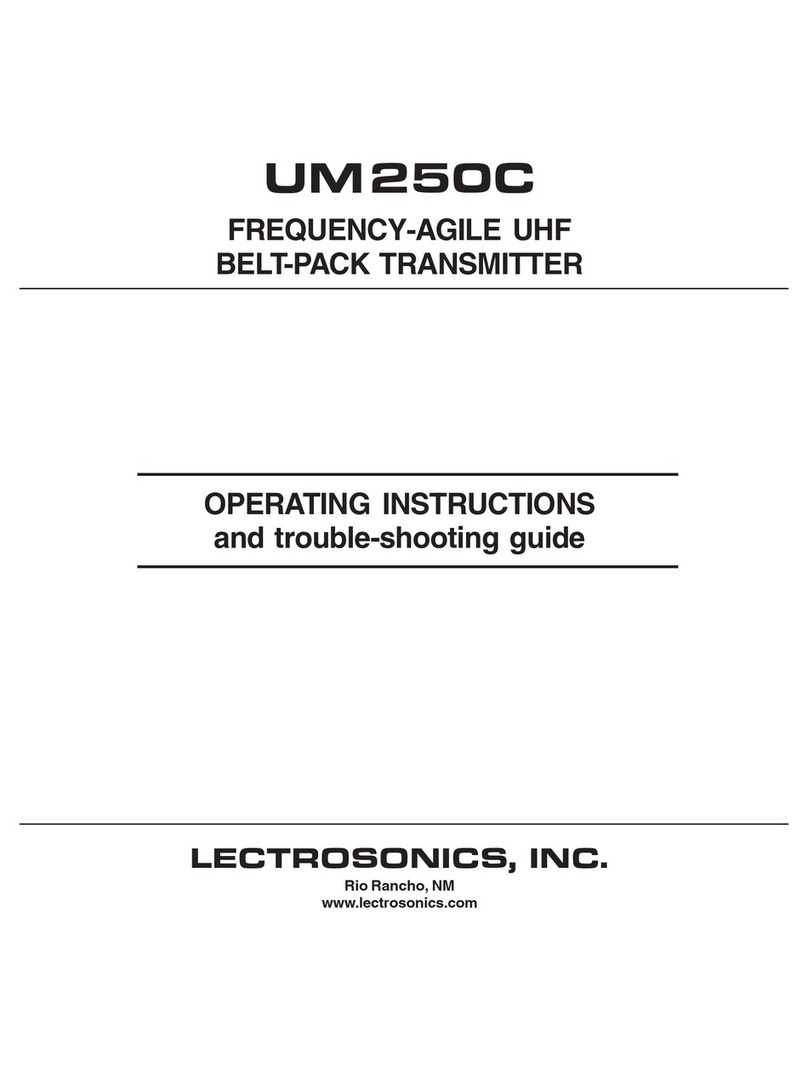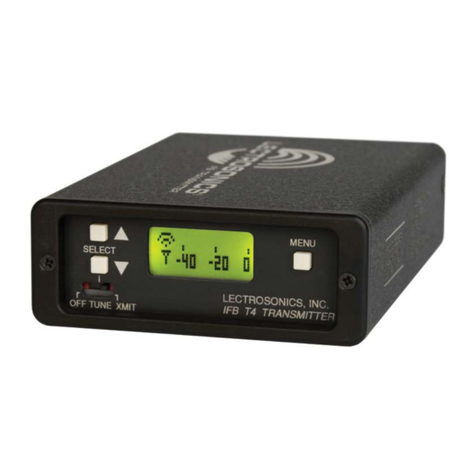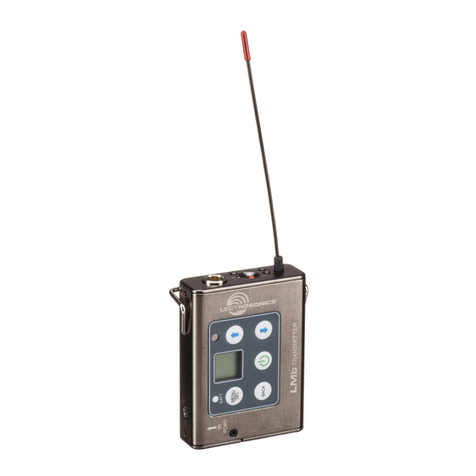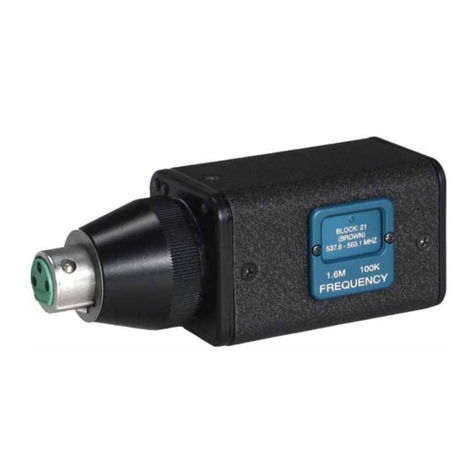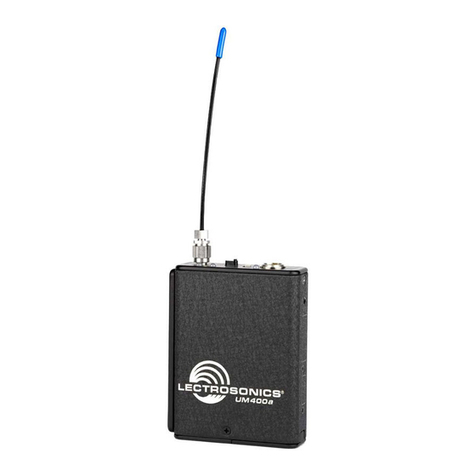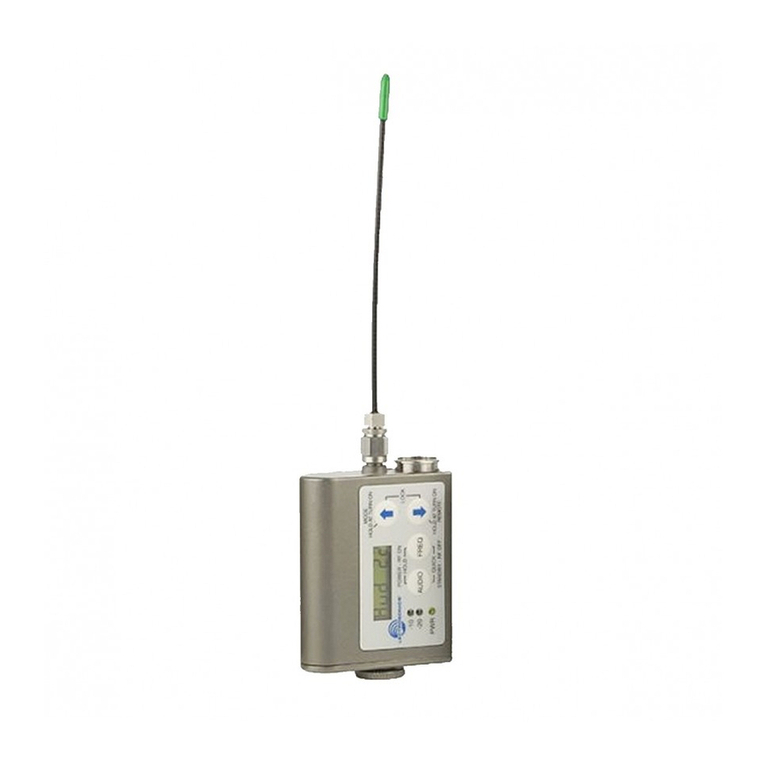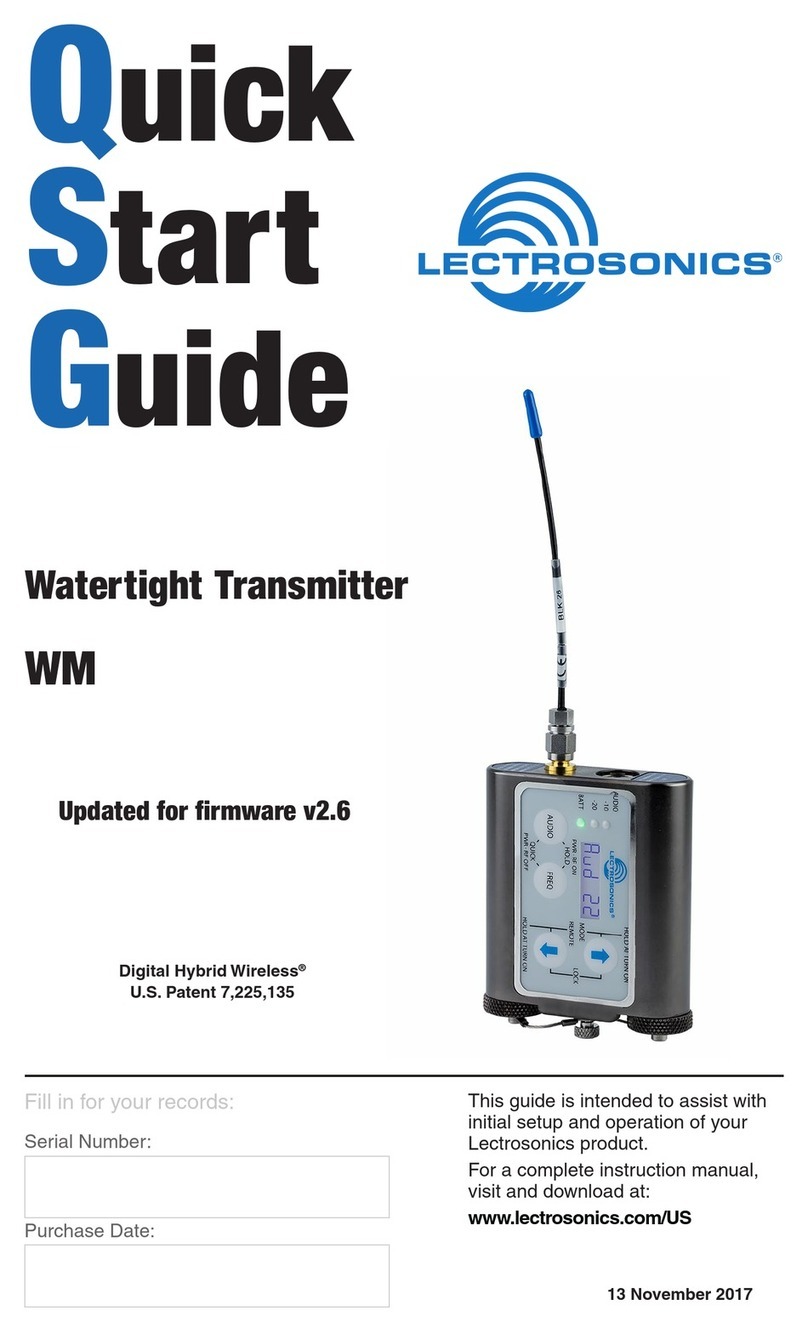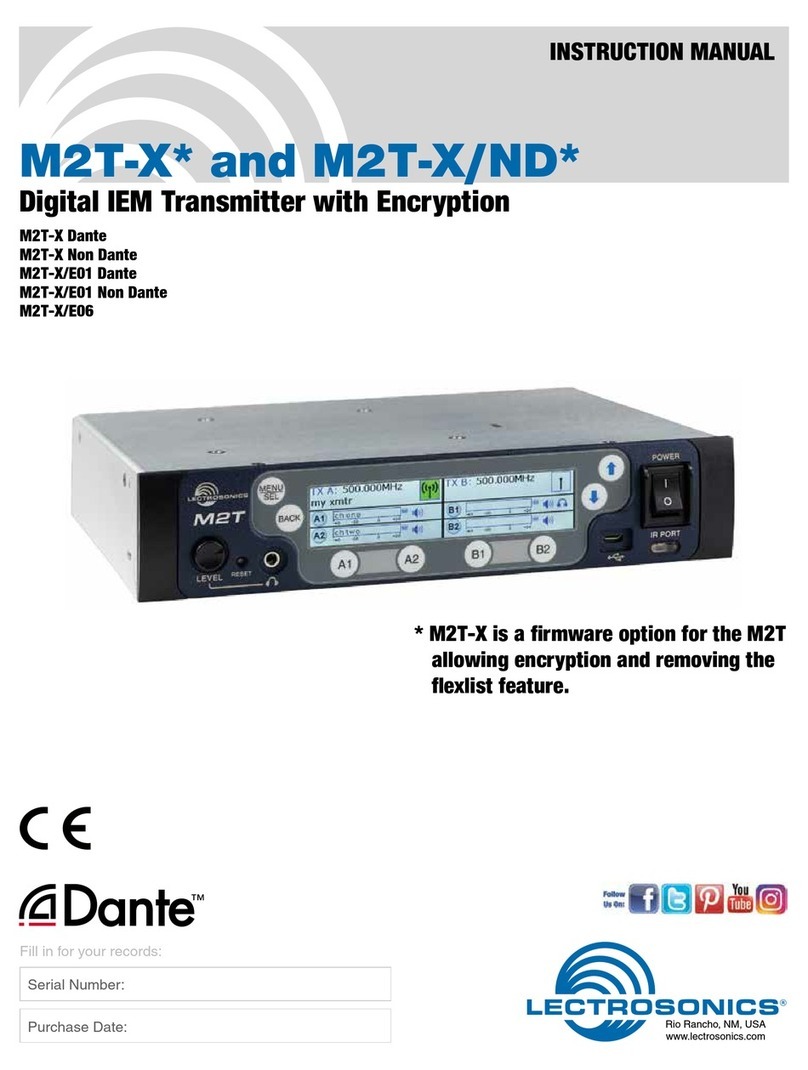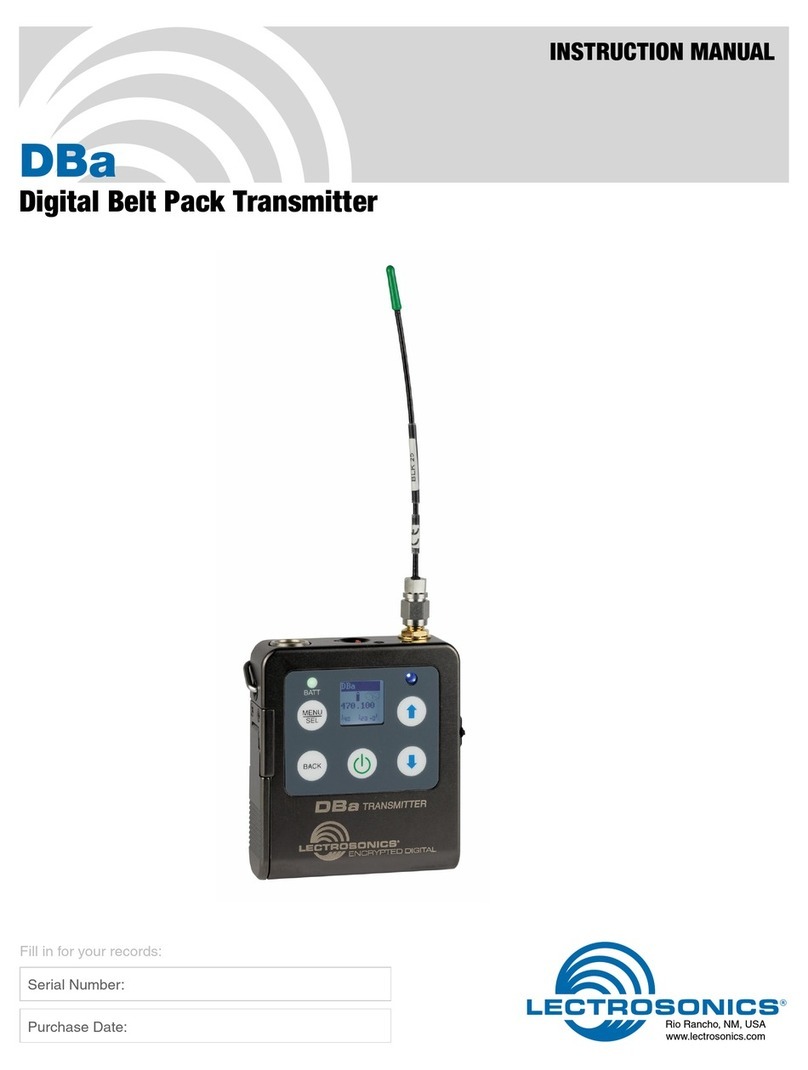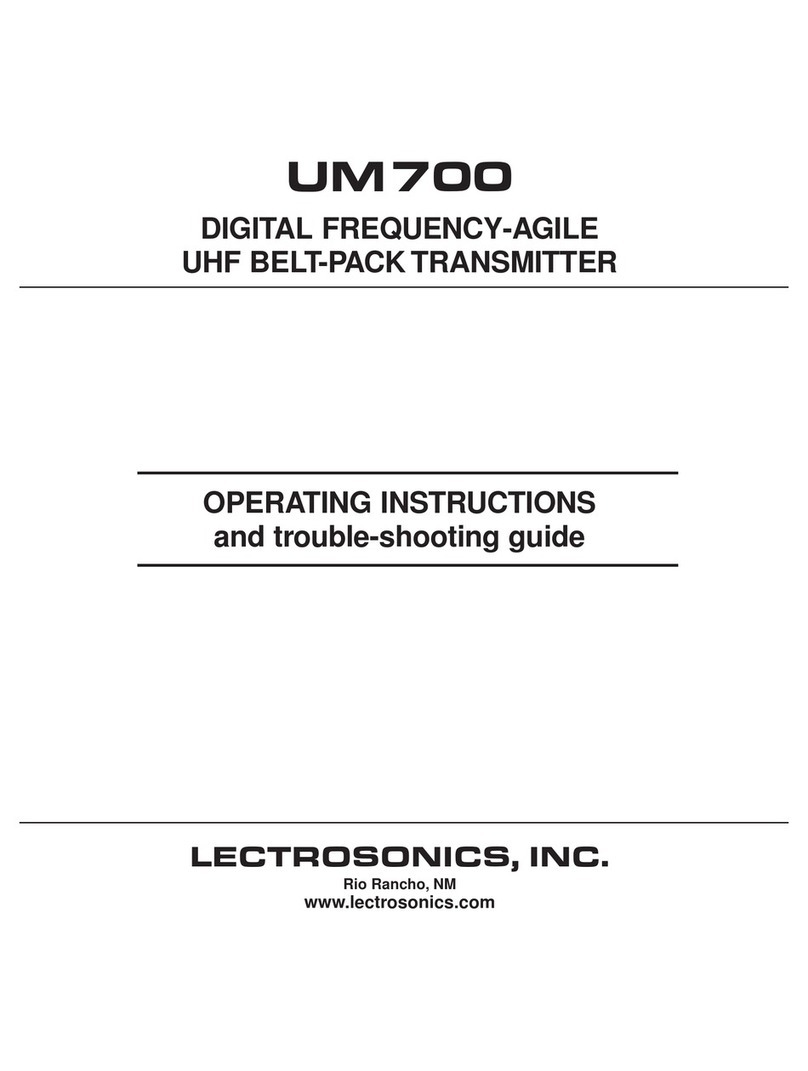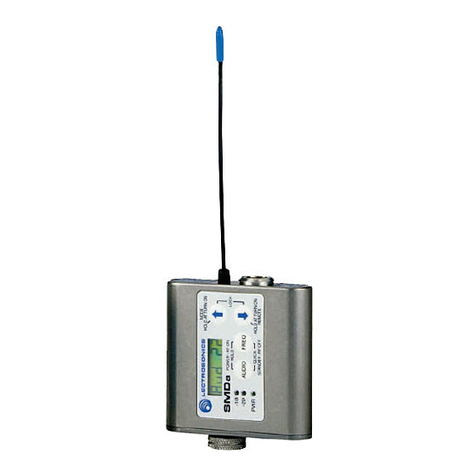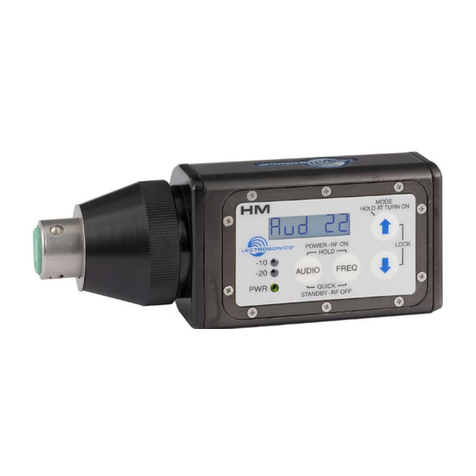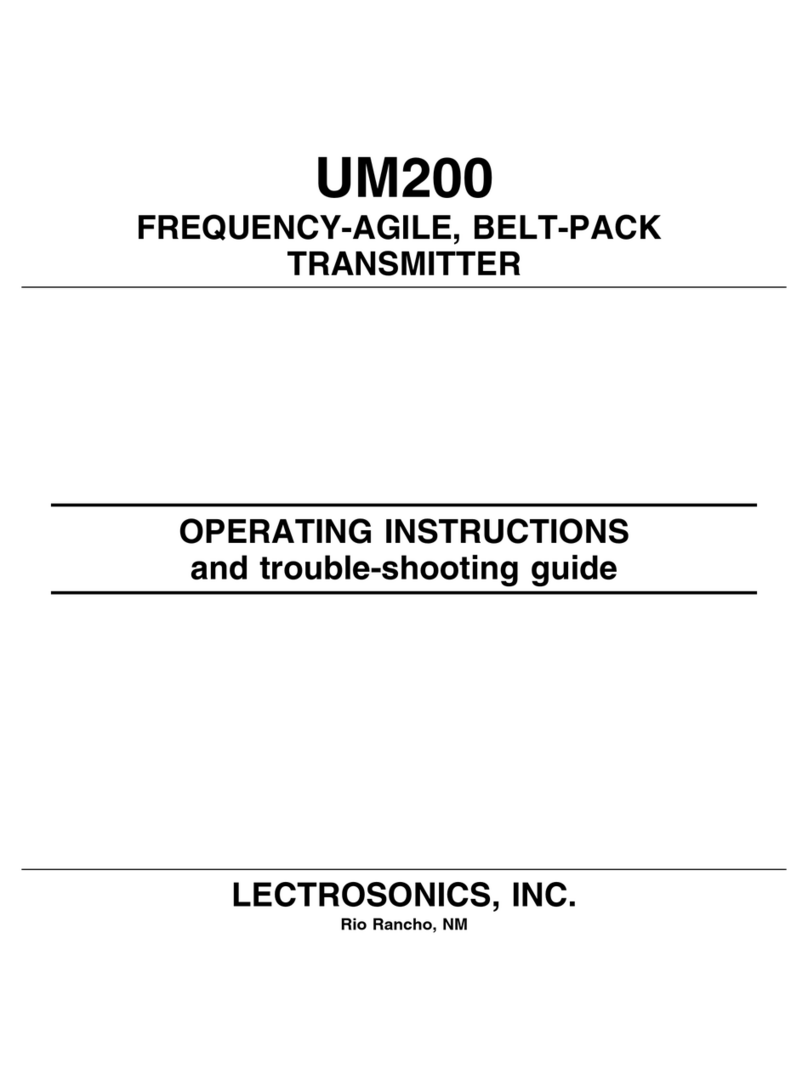
DBu-LEMO, DBu-LEMO/E01
LECTROSONICS, INC.
2
Introduction
The DBu-LEMO transmitter employs high eciency
digital circuitry for extended operating time on two AA
batteries. The transmitter can tune in coarse or ne steps
across the UHF television band from 470.100 to 607.950
MHz (E01: 470.100 - 614.375 MHz), with a selectable
output power of 10, 25 or 50 mW. The pure digital archi-
tecture enables AES 256-CTR encryption for high level
security applications.
Studio quality audio performance is assured by high
quality components in the preamp, wide range input gain
adjustment and DSP-controlled limiting. Input connec-
tions and settings are included for any lavaliere micro-
phone, dynamic microphones and line level inputs. Input
gain is adjustable over a 52 dB range in 1 dB steps to al-
low an exact match to the input signal level, to maximize
the dynamic range and signal to noise ratio.
Frequency Agility
The transmitter tunes across the entire frequency range,
from 470.100 MHz to 607.950 MHz (E01: 470.100 -
614.375).
Encryption
When transmitting audio, there are situations where
privacy is essential, such as during professional sporting
events, in court rooms or private meetings. For instances
where your audio transmission needs to be kept secure,
without sacricing audio quality, Lectrosonics imple-
ments AES256 encryption in our digital wireless micro-
phone systems. High entropy encryption keys are rst
created by a Lectrosonics receiver, such as the DSQD
Receiver. The key is then synced with the DBu-LEMO
via the IR port. The audio will be encrypted and can only
be decoded if both DBu-LEMO and receiver have the
matching encryption keys. If you are trying to transmit an
audio signal and keys do not match, all that will be heard
is silence.
DSP-controlled Input Limiter
The transmitter employs a digitally-controlled analog
audio limiter prior to the analog-to-digital converter.
The limiter has a range greater than 30 dB for excellent
overload protection. A dual release envelope makes the
limiter acoustically transparent while maintaining low
distortion. It can be thought of as two limiters in series,
connected as a fast attack and release limiter followed
by a slow attack and release limiter. The limiter recovers
quickly from brief transients, so that its action is hidden
from the listener, but recovers slowly from sustained high
levels to keep audio distortion low and preserve short
term dynamic changes in the audio.
Table of Contents
Introduction........................................................................... 2
Frequency Agility ............................................................... 2
Encryption .......................................................................... 2
DSP-controlled Input Limiter............................................. 2
DBu-LEMO Block Diagram................................................ 3
Battery Installation ............................................................... 4
Battery Status LED Indicator............................................. 4
Belt Clips............................................................................ 5
IR (infrared) Port................................................................. 5
Audio Input......................................................................... 5
Features and Functions ....................................................... 5
Operating Instructions ......................................................... 6
Powering On in Operating Mode....................................... 6
Powering On in Standby Mode ......................................... 6
Powering Off ...................................................................... 6
Power Menu Options............................................................ 6
Entering the Power Menu.................................................. 6
Main Menu and Setup Screen Details ................................ 6
Entering the Main Menu .................................................... 6
LCD Menu Map......................................................................7
Menu Item Descriptions.... ...................................................7
Gain/Adjusting the Inut Gain............................................. 8
Roll Off................................................................................ 8
InpCfg (Mic Input Configuration)....................................... 8
Setting Frequency.............................................................. 8
Transmitting Tuning Groups .............................................. 8
RF On? ............................................................................... 9
Setting Transmit Output Power ......................................... 9
Send Freq........................................................................... 9
SendAll ............................................................................... 9
GetFreq .............................................................................. 9
GetAll.................................................................................. 9
Key Type............................................................................. 9
WipeKey ............................................................................. 10
SendKey ............................................................................. 10
Programmable Switch Functions...................................... 10
Selecting Battery Type....................................................... 10
Remote............................................................................... 10
Locking the Settings.......................................................... 11
Backlight ............................................................................ 11
Defaults .............................................................................. 11
About.................................................................................. 11
Whip Antennas ..................................................................... 11
Microphone Wiring ............................................................... 11
Line Input Wiring and Use ................................................... 11
Supplied and Optional Accessories.................................... 12
LectroRM............................................................................... 13
Wireless Designer Software ............................................... 14
Firmware Update Instructions............................................. 14
Specications ....................................................................... 14
Troubleshooting.................................................................... 15
Service and Repair ............................................................... 16
Returning Units for Repair................................................. 16
